
Sonja Henie was a Norwegian figure skater and film star. She was a three-time Olympic champion in women's singles, a ten-time World champion (1927–1936) and a six-time European champion (1931–1936). Henie has won more Olympic and World titles than any other ladies' figure skater. She is one of only two skaters to defend a ladies' singles Olympic title, the other being Katarina Witt, and her six European titles have only been matched by Witt.

Katarina Witt is a German former figure skater. A two-time Olympic champion, Witt is regarded as one of the greatest ladies' singles figure skaters of all time. Her Laureus profile states "she is remembered most for her overall athleticism, her charismatic appeal and her glamorous image on the ice."
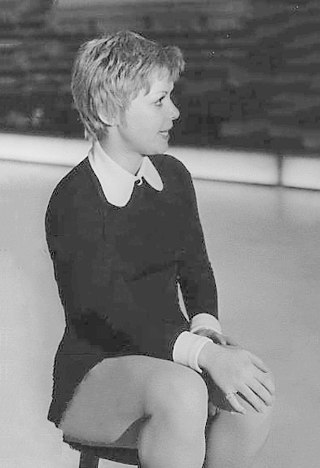
Karen Diane Magnussen, OC is a Canadian former competitive figure skater. She is the 1972 Olympic silver medallist and 1973 World champion. She was Canada's Female Athlete of the Year in 1971 and 1972, and was made an Officer of the Order of Canada in 1973.

The Ice Capades were traveling entertainment shows featuring theatrical ice skating performances. Shows often featured former Olympic and US National Champion figure skaters who had retired from formal competition. Started in 1940, the Ice Capades grew rapidly and prospered for 50 years. A decline in popularity ensued in the 1980s, and the show went out of business around 1995. There have been several attempts to revive the show and its name.
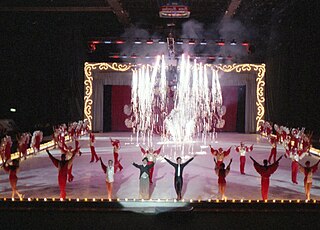
Holiday on Ice is an ice show currently owned by Medusa Music Group GmbH, a subsidiary of CTS EVENTIM, Europe's largest ticket distributor, with its headquarters in Bremen, Germany.

The Duquesne Gardens was the main sports arena located in Pittsburgh, Pennsylvania, during the first half of the 20th century. Built in 1890, the building originally served as a trolley barn, before becoming a multi-purpose arena. The Gardens opened three years after a fire destroyed the city's prior sports arena, the Schenley Park Casino, in 1896. Over the years, the Gardens was the home arena of several of Pittsburgh's historic sports teams, such as ice hockey's Pittsburgh Pirates and Pittsburgh Hornets. The Western Pennsylvania Hockey League, which was the first ice hockey league to openly hire and trade players, played all of its games at the Gardens. The arena was also the first hockey rink to ever use glass above the dasher boards. Developed locally by the Pittsburgh Plate Glass Company, Herculite glass was first tested in Pittsburgh. Most rinks were using wire mesh before the shatterproof glass was invented. Finally, the Pittsburgh Ironmen, a charter member of the Basketball Association of America, played at the Gardens from 1946 to 1947.
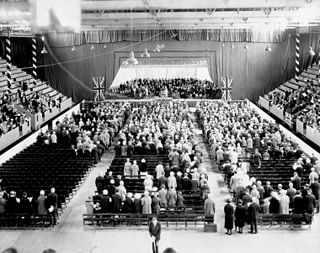
The Ottawa Auditorium was a 7,500-seat arena located in Ottawa, Ontario. It was located in Downtown Ottawa at the corner of O'Connor and Argyle Streets, today the site of the Taggart Family YMCA. Built primarily for ice hockey, the arena was also used for sports events, assemblies and musical concerts.

Magdalena Cecilia Colledge was a British figure skater. She was the 1936 Olympic silver medalist, the 1937 World Champion, the 1937–1939 European Champion, and a six-time British national champion.
Figure skating is a sport with participants across the world. Originally based in North America and Europe, the sport has experienced a major expansion in the countries of East Asia. The international governing body of the sport is the International Skating Union (ISU). Only those nations which are members of the International Skating Union are allowed to compete in the figure skating events in the Olympic Games.
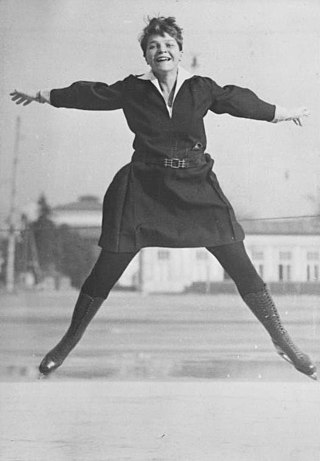
Herma Szabo was an Austrian figure skater who competed in ladies' singles and pairs. As a single skater, she became the 1924 Olympic champion and a five-time world champion (1922–1926). She also won two world titles in pairs with Ludwig Wrede.
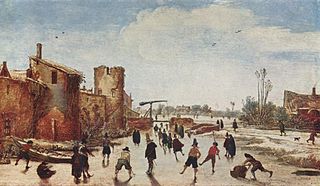
The history of figure skating stretches back to prehistoric times. Primitive ice skates appear in the archaeological record from about 3000 BC. Edges were added by the Dutch in the 13th and 14th century. International figure skating competitions began appearing in the late 19th century; in 1891, the European Championships were inaugurated in Hamburg, Germany, and in 1896, the first World Championship were held in Saint Petersburg, Russian Empire. At the 1908 Summer Olympics in London, England, figure skating became the first winter sport to be included in the Olympics.

Marilyn Ruth Wittstock was a Canadian figure skater who competed in ladies singles, under the name of Marilyn Ruth Take. She won the gold medal at the Canadian Figure Skating Championships in 1947 and competed at the 1948 Winter Olympics, finishing in 12th position.
Michael J.R. Kirby was a Canadian figure skater who competed in men's singles, and was also an actor. Later was an ice rink owner and skating coach.
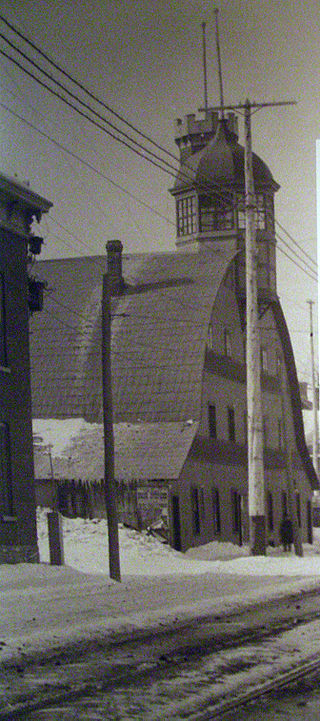
The Rideau Skating Rink was an indoor skating and curling facility located in Ottawa, Ontario, Canada. Consisting of a curling rink and a skating rink, it was one of the first indoor rinks in Canada. The Rideau Rink was scheduled to open on January 10, 1889, but unseasonably mild weather postponed the grand opening to February 1. It opened on January 25, 1889 for select V.I.P.s although this was a misunderstanding and should not have denied entry to season ticket holders. It was located on Theodore Street, at Waller Street, at the present location of the Arts Hall of the University of Ottawa, near the Rideau Canal.
The Minto Skating Club is a competitive figure skating club in Ottawa, Ontario, Canada, founded in 1904. The Club is a member of the Skate Canada figure skating organization in Canada, and was a founder of the predecessor organization to Skate Canada, the "Figure Skating Department" of the Amateur Skating Association of Canada in 1914.
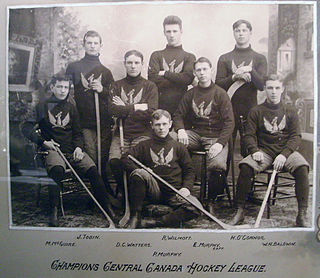
The Ottawa Capitals were the competing clubs of the Capital Amateur Athletic Association (CAAA) of Ottawa, Ontario, Canada. The Association competed in ice hockey, lacrosse and other athletics.
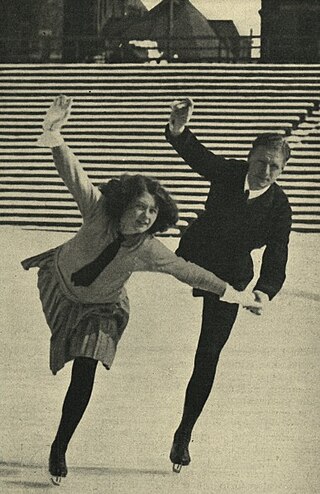
Melville F. Rogers was a Canadian figure skater and figure skating judge. He competed in the disciplines of single skating, pair skating, ice dancing, and fours. He won the Canadian championship several times.

Wilhelm Henie was a Norwegian sportsman and furrier. He was track cycling World Champion in 1894, and competed at the European Speed Skating Championships in 1896. Henie was coach and manager for his daughter Sonja, who became a famous figure skater and later film actress.

The Wissahickon Skating Club is a non-profit skating club that is located in the Chestnut Hill section of Philadelphia.
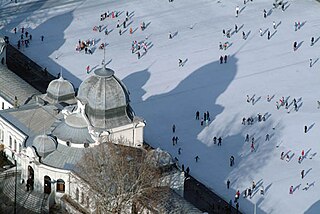
The City Park Ice Rink is a public ice rink located in the City Park of the Hungarian capital Budapest, between the Heroes' Square and the Vajdahunyad Castle. Opened in 1870, it is the largest and one of the oldest ice rinks in Europe. In summer months the area is filled up with water to create a pond, which is primarily used for boating, but also hosted several special events, such as the snowball fight world record attempt in 2009 or the Art on Lake exhibition in 2011.
















